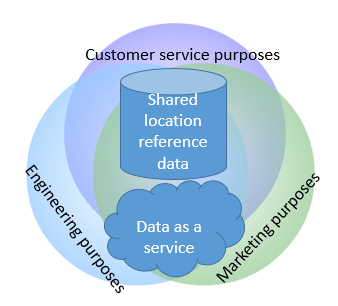
Data quality dimensions are some of the most used terms when explaining why data quality is important, what data quality issues can be and how you can measure data quality. Ironically, we sometimes use the same data quality dimension term for two different things or use two different data quality dimension terms for the same thing. Some of the troubling terms are:
Validity / Conformity – same same but different
Validity is most often used to describe if data filled in a data field obeys a required format or are among a list of accepted values. Databases are usually well in doing this like ensuring that an entered date has the day-month-year sequence asked for and is a date in the calendar or to cross check data values against another table and see if the value exist there.
The problems arise when data is moved between databases with different rules and when data is captured in textual forms before being loaded into a database.
Conformity is often used to describe if data adheres to a given standard, like an industry or international standard. This standard may due to complexity and other circumstances not or only partly be implemented as database constraints or by other means. Therefore, a given piece of data may seem to be a valid database value but not being in compliance with a given standard.
For example, the code value for a colour being “0,255,0” may be the accepted format and all elements are in the accepted range between 0 and 255 for a RGB colour code. But the standard for a given product colour may only allow the value “Green” and the other common colour names and “0,255,0” will when translated end up as “Lime” or “High green”.
Accuracy / Precision – true, false or not sure
The difference between accuracy and precision is a well-known statistical subject.
In the data quality realm accuracy is most often used to describe if the data value corresponds correctly to a real-world entity. If we for example have a postal address of the person “Robert Smith” being “123 Main Street in Anytown” this data value may be accurate because this person (for the moment) lives at that address.
But if “123 Main Street in Anytown” has 3 different apartments each having its own mailbox, the value does not, for a given purpose, have the required precision.
If we work with geocoordinates we have the same challenge. A given accurate geocode may have the sufficient precision to tell the direction to the nearest supermarket is, but not precise enough to know in which apartment the out-of-milk smart refrigerator is.
Timeliness / Currency – when time matters
Timeliness is most often used to state if a given data value is present when it is needed. For example, you need the postal address of “Robert Smith” when you want to send a paper invoice or when you want to establish his demographic stereotype for a campaign.
Currency is most often used to state if the data value is accurate at a given time – for example if “123 Main Street in Anytown” is the current postal address of “Robert Smith”.
Uniqueness / Duplication – positive or negative
Uniqueness is the positive term where duplication is the negative term for the same issue.
We strive to have uniqueness by avoiding duplicates. In data quality lingo duplicates are two (or more) data values describing the same real-world entity. For example, we may assume that
- “Robert Smith at 123 Main Street, Suite 2 in Anytown”
is the same person as
- “Bob Smith at 123 Main Str in Anytown”
Completeness / Existence – to be, or not to be
Completeness is most often used to tell in what degree all required data elements are populated.
Existence can be used to tell if a given dataset has all the needed data elements for a given purpose defined.
So “Bob Smith at 123 Main Str in Anytown” is complete if we need name, street address and city, but only 75 % complete if we need name, street address, city and preferred colour and preferred colour is an existent data element in the dataset.
More on data quality dimensions:
- Learn about the trends in which dimensions that are hot in the post Data Quality Dimensions in Motion.
- Read about which dimensions that are the top ones for product data in the post 5 Vital Product Data Quality Dimensions.
- Explore the relationship between dimensions and real-world entities in the post Data Quality Dimensions and Real World Alignment.

 Now, the focal point of Product Data Lake is not the exciting world of address data quality, but product data quality.
Now, the focal point of Product Data Lake is not the exciting world of address data quality, but product data quality. Today is the first day in the new year. The year of the rooster according to the Lunar Calendar observed in East Asia. One of the characteristics of the year of the rooster is that in this year, people will tend to complicate things.
Today is the first day in the new year. The year of the rooster according to the Lunar Calendar observed in East Asia. One of the characteristics of the year of the rooster is that in this year, people will tend to complicate things.




 Being too late was unfortunately also the case as examined in the article
Being too late was unfortunately also the case as examined in the article